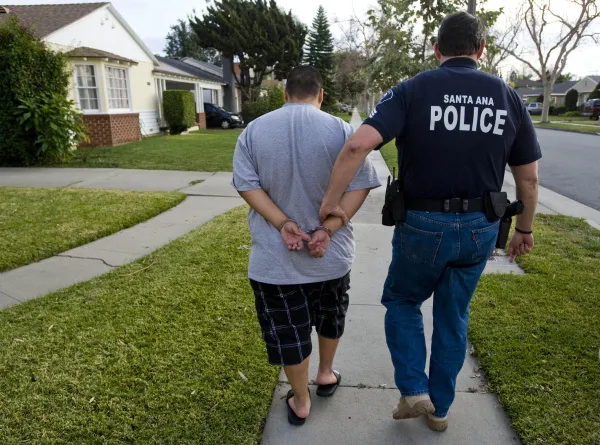As Santa Ana residents grapple with escalating crime, there is a palpable sense of irony in the disconnect between the vast resources at the disposal of police unions and the city’s ongoing struggle with criminal activities.
Only three days ago, 23-year-old Santa Ana resident, Arian Fabian Ortega, was arrested for luring a minor to his apartment for sex.
This comes on the anniversary of another tragic crime— when just last year, 28-year-old Quinnton Xavier Roberson was arrested for kidnapping and sexually assaulting a woman at a Santa Ana mall.
And, only last month, 39-year-old Santa Ana resident Nicolas Gonzalez, who is suspected of sexually assaulting an 11-year-old child, successfully fled police and remains at large.
It’s no secret that Santa Ana struggles with crime. But what remains a mystery is why the Santa Ana Police Officers Association (SAPOA), which wields considerable political power and vast resources, cannot get a grip on curbing crime.
While the three examples used at the beginning of this article are of sexual violence, it’s worth noting that all forms of crime have gone up— from burglaries and car thefts to property offenses and domestic violence. According to statistics compiled by NeighborhoodScout, the chance of becoming a victim of either violent or property crime in Santa Ana is 1 in 33. This crime rate is higher than 81% of California’s cities, and it is far worse than any other part of Orange County.
Indeed, the SAPOA seemingly gets every favorable political outcome that comes before the City Council. And when there is a danger that there won’t be the case (such as when former Councilwoman Cecilia Iglesias voted against a $25.6 million police pay increase in 2019), the union has no trouble spending nearly half a billion dollars to unseat the one challenging them.
And yet, even when they succeed, it does nothing to curtail the rate of crime.
In the ongoing discourse around crime in Santa Ana, the influence of police unions in shaping the city’s approach to law enforcement remains a critical point of contention. Critics argue that the focus of police unions, often geared towards securing favorable labor agreements, lucrative pensions, and financial gains for their members, detracts from the core mission of effectively addressing and reducing criminal behavior.
In order to get elected to Santa Ana City Council, a candidate must cooperate with police union demands. If a candidate challenges those demands, they will have hundreds of thousands of dollars in union dues leveraged against them. This paradox should demonstrate the misalignment of incentives within the union framework, and it should explain how an entity like SAPOA deeply entrenches itself into a position of power.
Sadly, it is unlikely that any substantial reform will come with the current makeup of the City Council. One can only hope that with each crime, the truth about Santa Ana’s rampant crime problem reaches more eyes and the community’s urgent need for enhanced safety becomes more evident.


